Virtualization
What is Virtualization?
Virtualization is an add-on platform feature that makes it possible to integrate manual analyses that are locally executed into data processing workflows.
This feature facilitates:
- Interactive Analysis: Enables judgment-driven analysis within a rich, scientifically familiar user experience.
- Traceability: Provides visibility into session creation, users involved, input/output files, and access history, ensuring data traceability.
- Flexibility: Allows for the integration of encrypted files or proprietary binaries in a data pipeline, capturing analyses in a structured, machine-readable format.
- Collaboration: Facilitates live collaboration by allowing sessions to be shared and accessed by colleagues.
- Scalability: Offers an environment that can scale up compute resources as needed, reducing the risk of application crashes and data loss.
Some examples of analyses that could be suitable are:
- Flow cytometry gating
- Protein structure analysis
- Microscopy image analysis
- Gel electrophoresis band quantification
- ddPCR analysis
- Statistical charting / data visualization
To use this feature, scientists select files relevant files for processing from the File Browser, conduct an analysis in the software, and then store relevant results back to Ganymede File Storage by saving output files in the appropriate location.
If you're interested in adding an application (whether external application or internally developed application), please reach out to Ganymede to explore your specific use case.
Using Virtualization
Users can start a session from the File Browser by selecting files and the relevant App. The selected files will become input files to the session and will appear in the C:\Users\appuser\Desktop\input_files directory.
Starting a Session
- Navigate to the File Browser.
- Filter for the relevant files to bring into the session. Commonly, this would be done by filtering for files with a specific Tag or set of Tags.
- Select the relevant files by using the checkboxes on the left side of the files table.
The checkbox in the top-left corner of the table will select all files on the current page. Traversing multiple pages to select files is possible, as files remain selected after navigating to different pages.
- In the top-right corner, a Run Application button will become clickable. Hover over the button and select the relevant app from the dropdown.

- A new window will open, and the session will start loading. Sessions typically take 2-3 minutes to initialize. You can navigate away while it loads; if the window is closed, you can return to the session via the Sessions page.
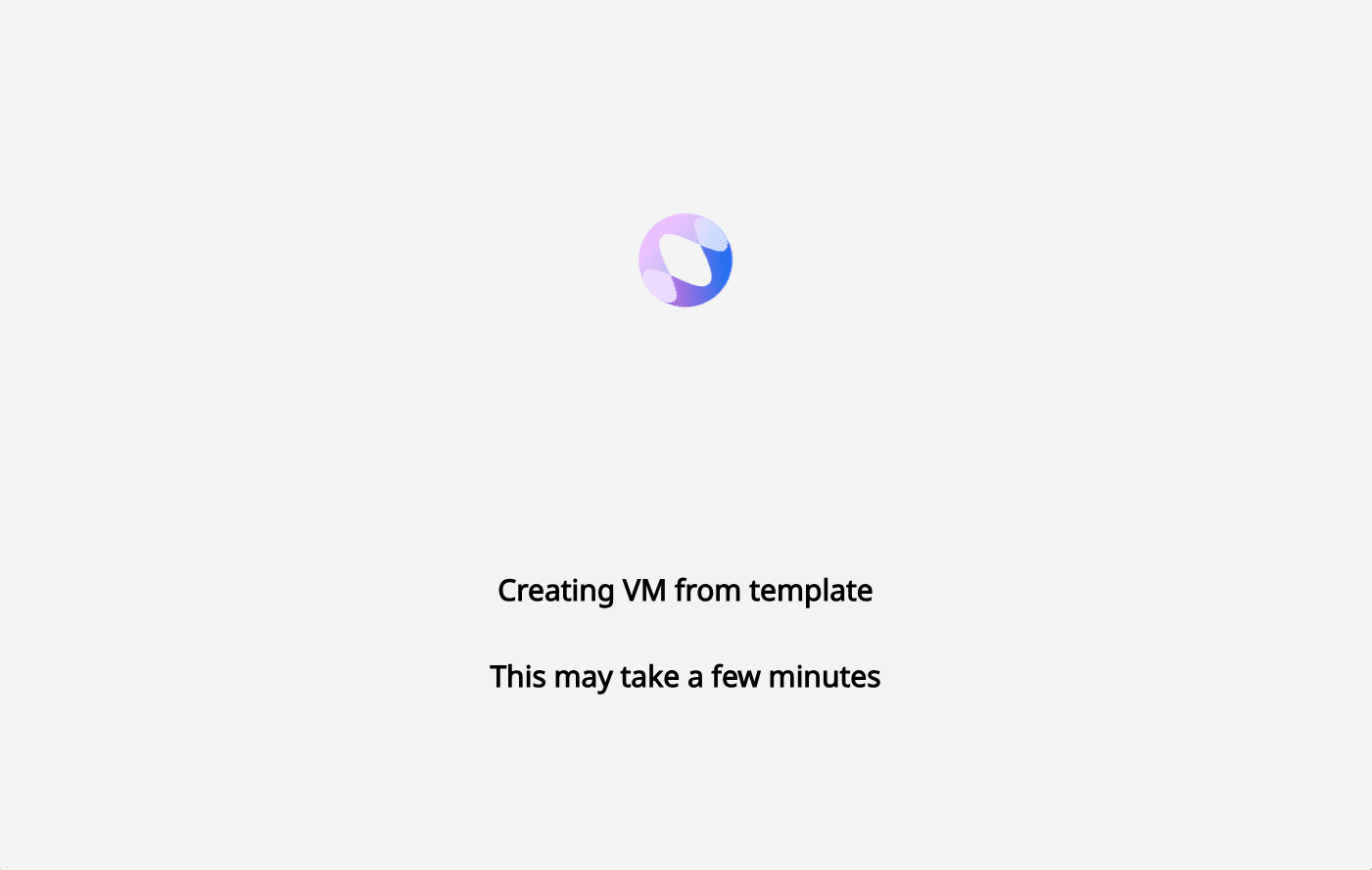
Using a Session
Logging into a session
When the session first loads, you will see a Windows lock screen with a Ganymede background.
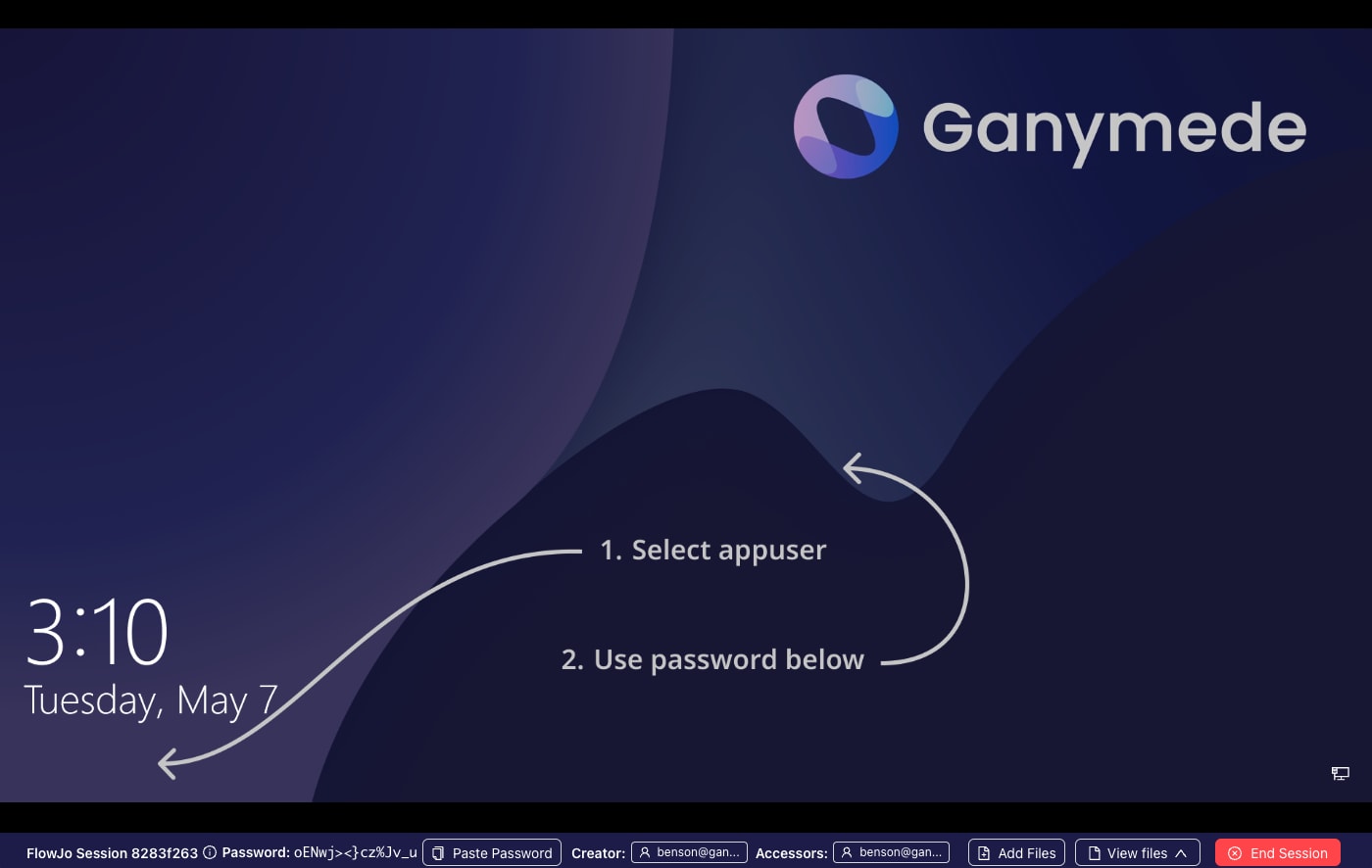
- Click anywhere for the user login to appear.
- As denoted by the arrows, you will need to select the “appuser” account.
- The session password is displayed at the bottom of the screen. Click on the button and paste it into the password field.
Once the session is opened, a Windows desktop appears. On the desktop, there is a directory called “Input_Files”. This directory contains the files that were selected in the File Browser during session creation.
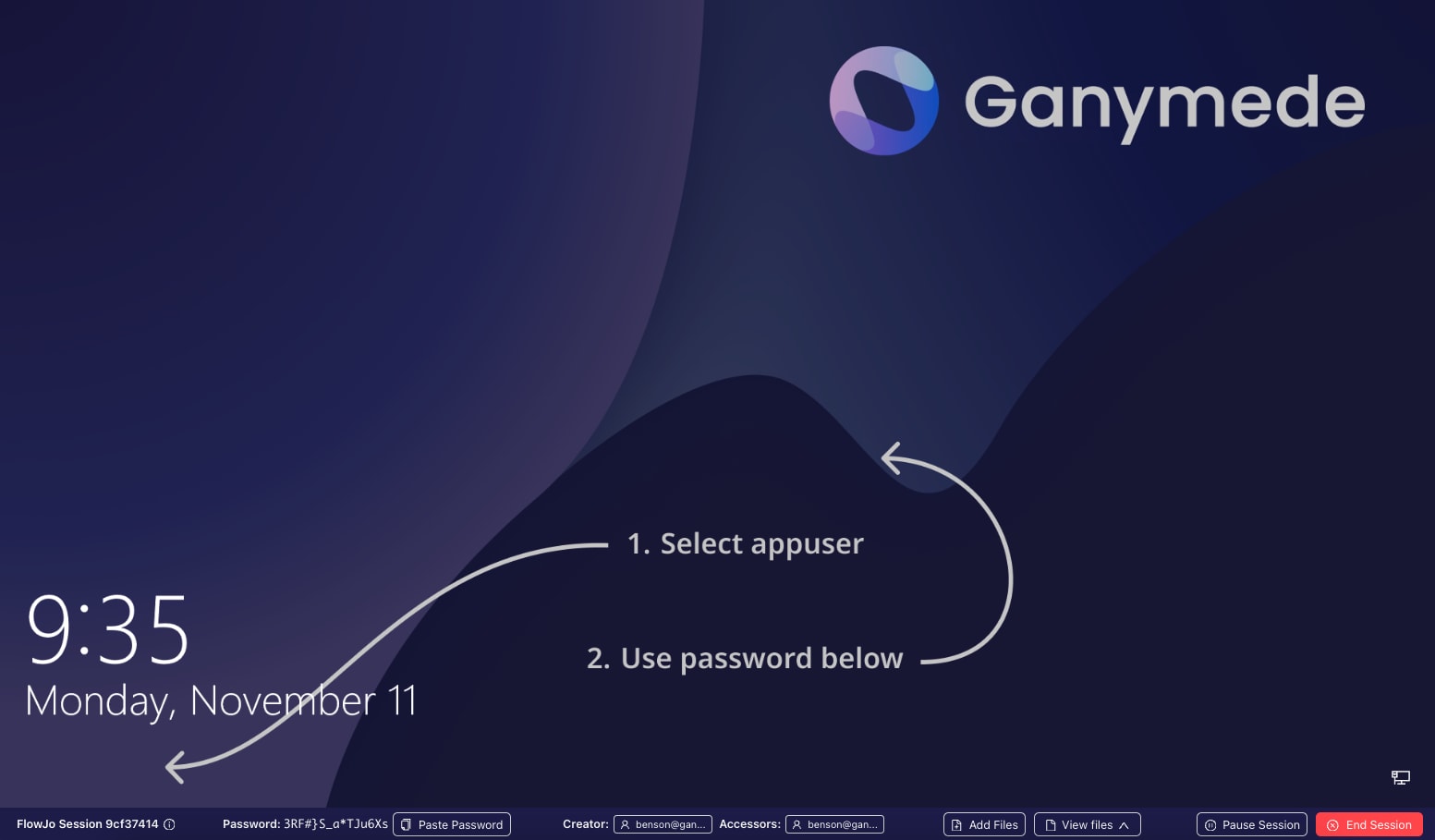
Adding files to a session
If additional files are needed, you can add them from either the Sessions page or directly within the session:
- From the Sessions Page: Navigate to the relevant session and click the Add Files (+) icon next to the input files.

- From Within the Session: Navigate to the relevant session and click the Add Files (+) icon next to the input files.
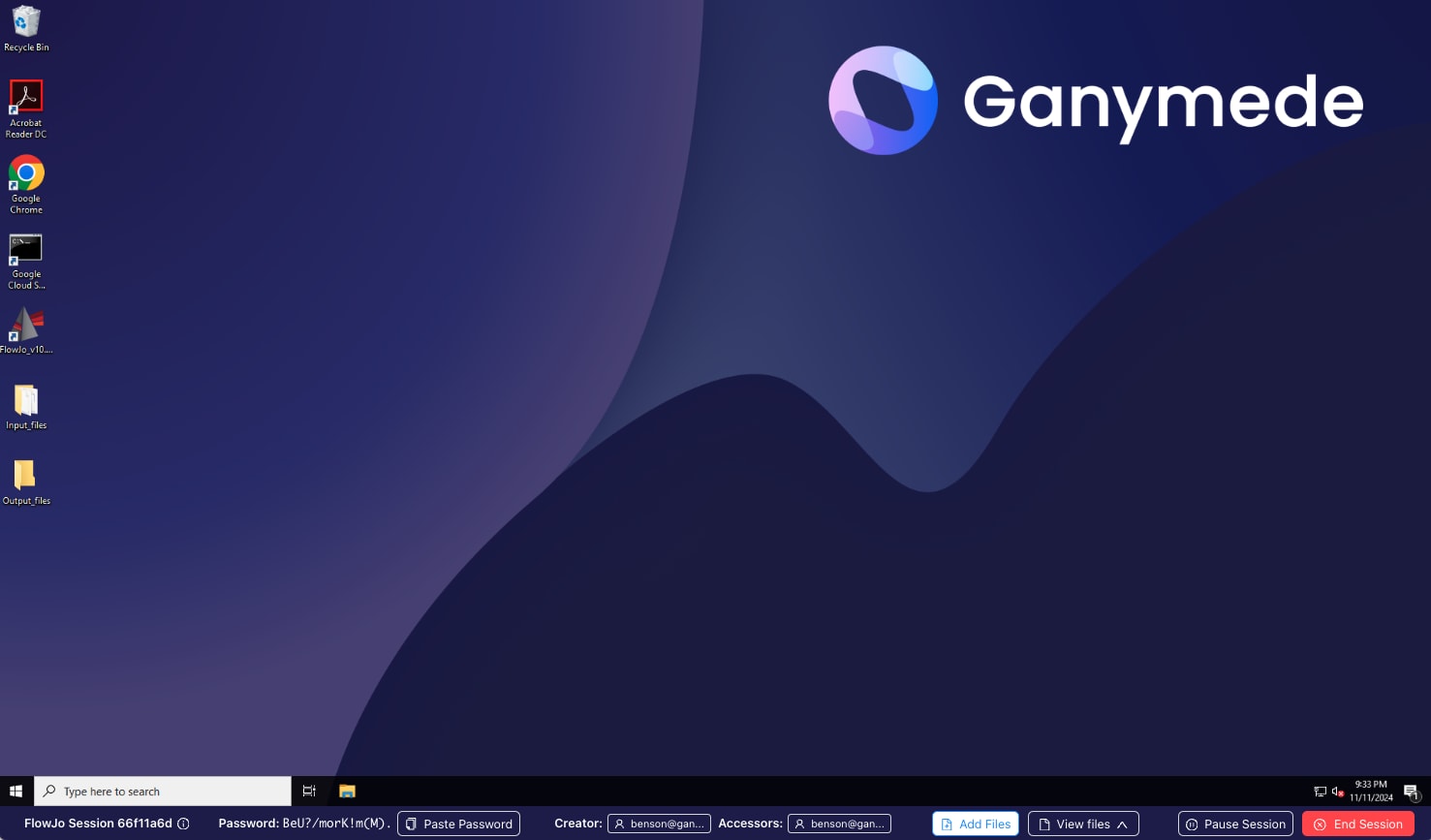
which launches a modal for selecting files from Ganymede data storage to add.
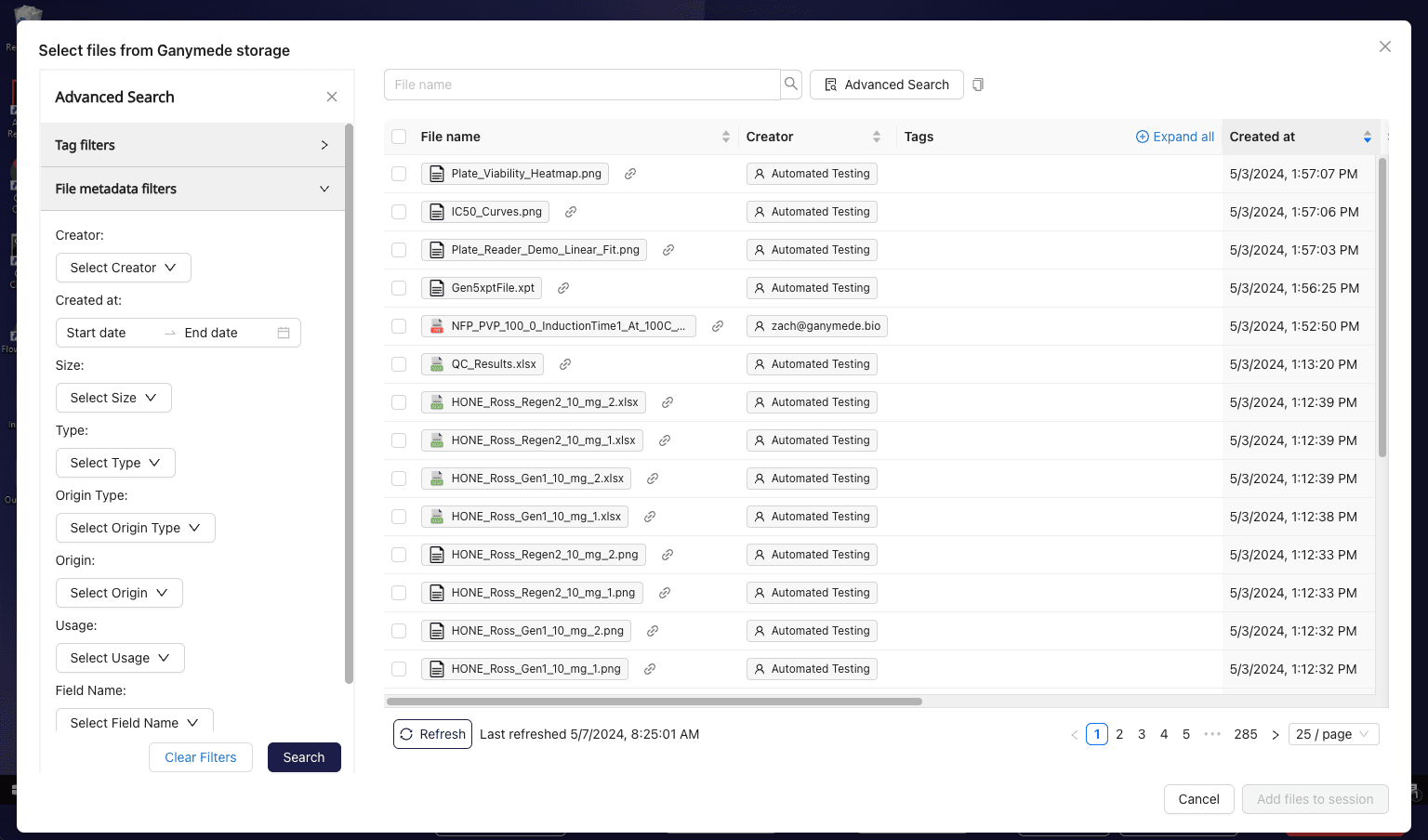
Pausing a session
Virtualization sessions can be paused by clicking on the Pause Session button in the control bar at the bottom of the screen.
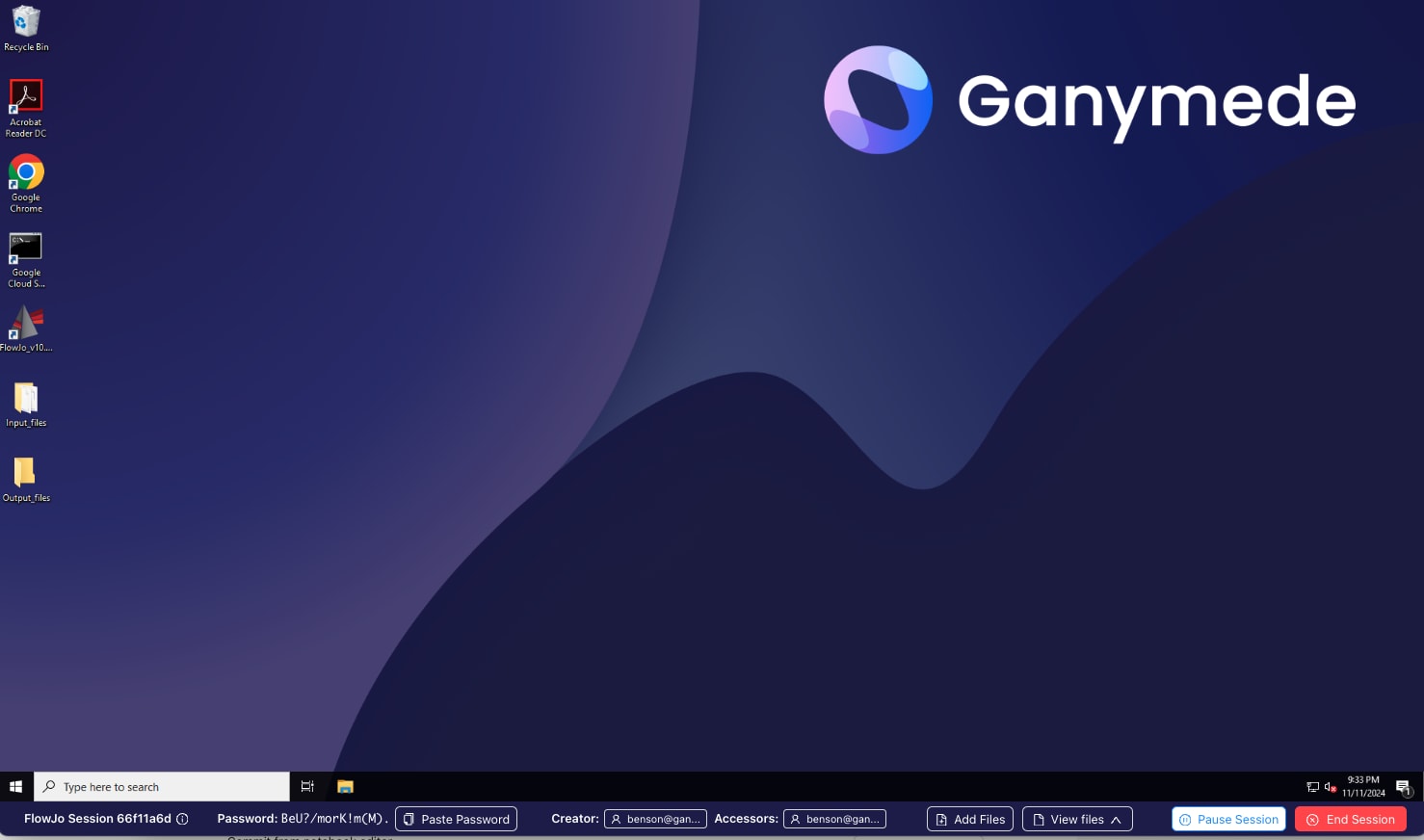
This can be useful for preserving the state of the session; files on the desktop will be retained, and the session will be paused.
Application state is not preserved; any unsaved work within the application will be lost.
Resuming a session
To resume a paused session, navigate to the Sessions page and click the Resume button next to the relevant session.

Storing files from a session
After completing your analysis, save the output files to Ganymede File Storage.
Remember to capture output files, as any files not saved in Ganymede will be lost once the session ends.
To capture an output file:
- Move Files to Output Directory: Copy or move the output files to the "Output_files" directory on the desktop (C:\Users\appuser\Desktop\Output_files).
- Verify File Capture: Check the "Output Files" section in the control bar at the bottom of the screen to ensure files were captured.
